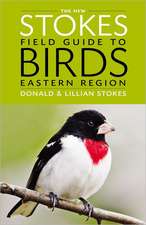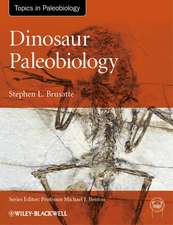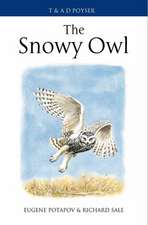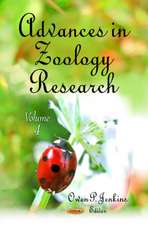Mutagenesis of the Mouse Genome: Georgia Genetics Review, cartea 2
Editat de Monica Justice, Mary Bedellen Limba Engleză Hardback – 18 feb 2005
| Toate formatele și edițiile | Preț | Express |
|---|---|---|
| Paperback (1) | 634.49 lei 6-8 săpt. | |
| SPRINGER NETHERLANDS – 21 apr 2014 | 634.49 lei 6-8 săpt. | |
| Hardback (1) | 643.34 lei 6-8 săpt. | |
| SPRINGER NETHERLANDS – 18 feb 2005 | 643.34 lei 6-8 săpt. |
Preț: 643.34 lei
Preț vechi: 756.86 lei
-15% Nou
Puncte Express: 965
Preț estimativ în valută:
123.11€ • 131.64$ • 102.64£
123.11€ • 131.64$ • 102.64£
Carte tipărită la comandă
Livrare economică 17 aprilie-01 mai
Preluare comenzi: 021 569.72.76
Specificații
ISBN-13: 9781402028755
ISBN-10: 140202875X
Pagini: 97
Ilustrații: VI, 98 p.
Dimensiuni: 210 x 297 x 10 mm
Greutate: 0.5 kg
Ediția:2004
Editura: SPRINGER NETHERLANDS
Colecția Springer
Seria Georgia Genetics Review
Locul publicării:Dordrecht, Netherlands
ISBN-10: 140202875X
Pagini: 97
Ilustrații: VI, 98 p.
Dimensiuni: 210 x 297 x 10 mm
Greutate: 0.5 kg
Ediția:2004
Editura: SPRINGER NETHERLANDS
Colecția Springer
Seria Georgia Genetics Review
Locul publicării:Dordrecht, Netherlands
Public țintă
ResearchCuprins
From the Atomic Age to The Genome Project.- Chemical mutagenesis of the mouse genome: an overview.- Effects of male germ-cell stage on the frequency, nature, and spectrum of induced specific-locus mutations in the mouse.- Allelic mutations of the sodium channel SCN8A reveal multiple cellular and physiological functions.- Towards a mutant map of the mouse – new models of neurological, behavioural, deafness, bone, renal and blood disorders.- Implementing large-scale ENU mutagenesis screens in North America.- Genetic mapping and ENU mutagenesis.- The Mouse Phenome Project.- Genetically altered mice: phenotypes, no phenotypes, and Faux phenotypes.- Visualizing the laboratory mouse: capturing phenotype information.
Recenzii
From the reviews:
"Mutagenesis of the Mouse Genome is a collection of papers originally presented at the Second Georgia Genetics Symposium in 2002 and printed in a special issue of Genetica in 2004. … this volume collects in one place much information that will prove valuable to current and prospective users of the wealth of mice produced by chemical mutagenesis. … this book provides a strong introduction to the origins, acquisition and use of mutagenized mice." (Elissa J. Chesler, Genes, Brain and Behaviour, Vol. 5, 2006)
"Mutagenesis of the Mouse Genome is a collection of papers originally presented at the Second Georgia Genetics Symposium in 2002 and printed in a special issue of Genetica in 2004. … this volume collects in one place much information that will prove valuable to current and prospective users of the wealth of mice produced by chemical mutagenesis. … this book provides a strong introduction to the origins, acquisition and use of mutagenized mice." (Elissa J. Chesler, Genes, Brain and Behaviour, Vol. 5, 2006)
Textul de pe ultima copertă
The Human Genome Project has changed our approach to biology. Sequence data are being acquired from multiple organisms at a phenomenal pace and mutagenesis is being carried out in many model organisms to discover gene functions. The mouse is the first mammal to be subjected to large-scale mutagenesis, for its biological similarities to the human will permit key discoveries. Mutagenesis of the Mouse Genome focuses on articles relevant to mouse chemical mutagenesis, and is dedicated to the memory of the mutagenesis pioneer, William L. Russell. Monica Justice provides an overview of the history of the Human Genome Project and use of the mouse as the primary organism for the functional annotation of the mammalian genome. With special articles by Jean-Louis Guenet describing the history and development of mouse chemical mutagenesis, Liane Russell analyzing decades of data on DNA damage after chemical treatment, Steven Barthold describing how environment can affect mouse phenotypes, Miriam Meisler summarizing the power of allelic series, Molly Bogue describing the variation in mouse inbred strains, and Mark Strivens and Janan Eppig showing how informatics tools can aid in functional analysis, this book is designed to be a handbook and reference guide for mouse genetics in the post-genome era.








